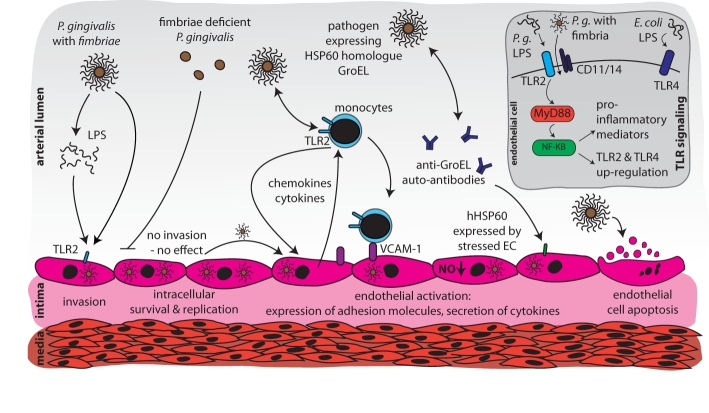Figure 1.
Schematic overview of potential mechanisms linking periodontal infections and endothelial dysfunction/incipient atherosclerosis. Vascular endothelial cells are invaded by fimbriated pathogens, e.g., P. gingivalis. These pathogens can persist and multiply intracellularly. Activation of Toll-like receptor 2 (TLR2) by fimbriated bacteria or LPS results in release of pro-inflammatory mediators and up-regulation of cell adhesion molecules. Monocytes are recruited by a gradient of chemotactic cytokines, such as MCP-1. Antibodies against bacterial heat-shock proteins, such as HSP60-related GroEL, auto-react with mammalian HSP60 expressed by activated endothelium, resulting in cell destruction. Further, P. gingivalis induces apoptosis of endothelial cells.

